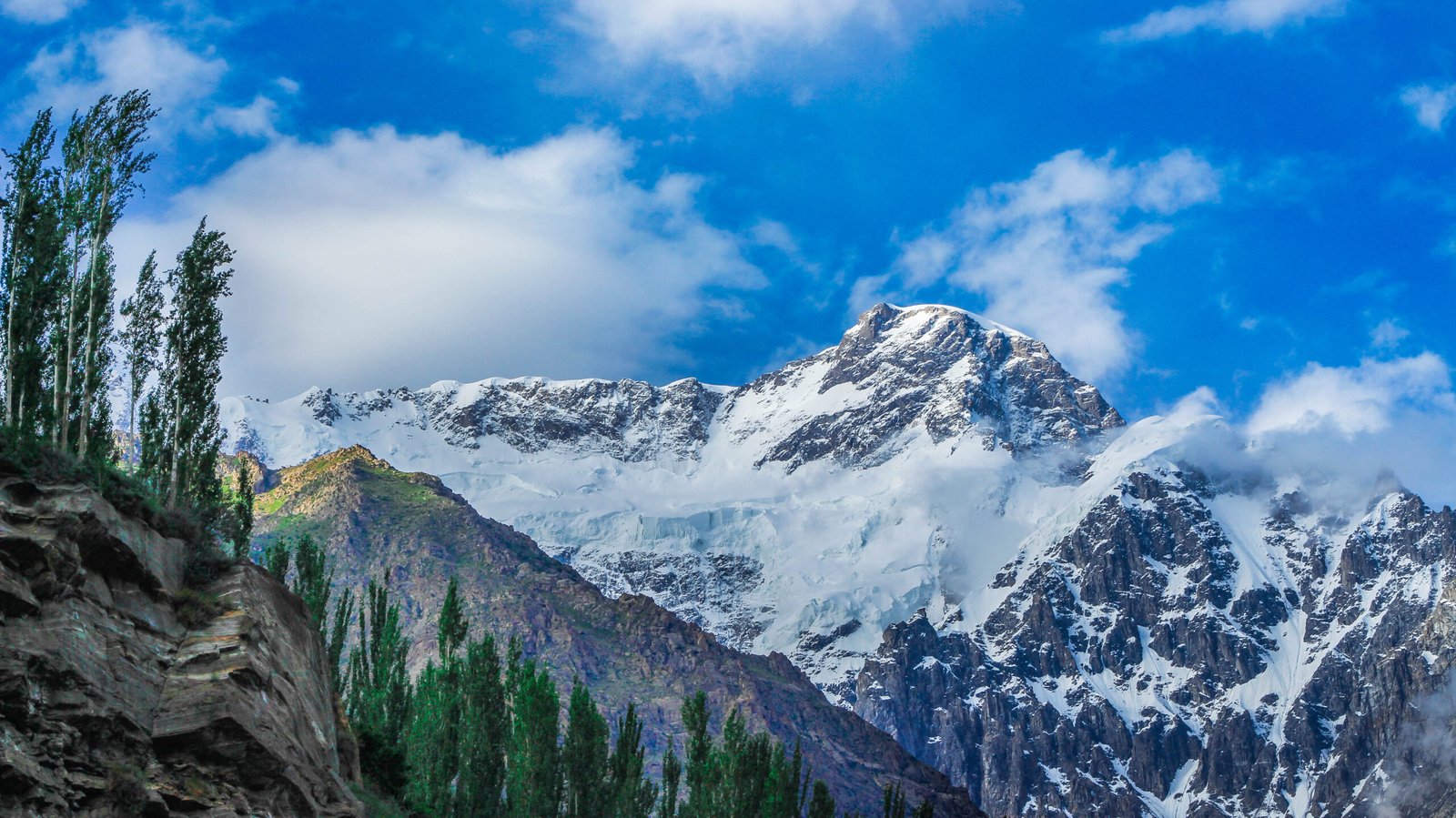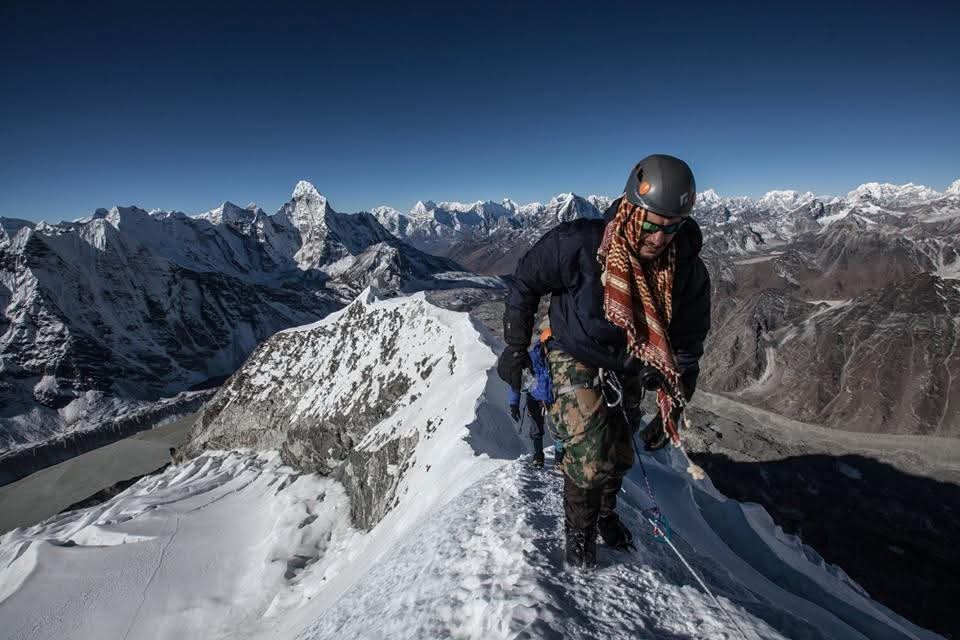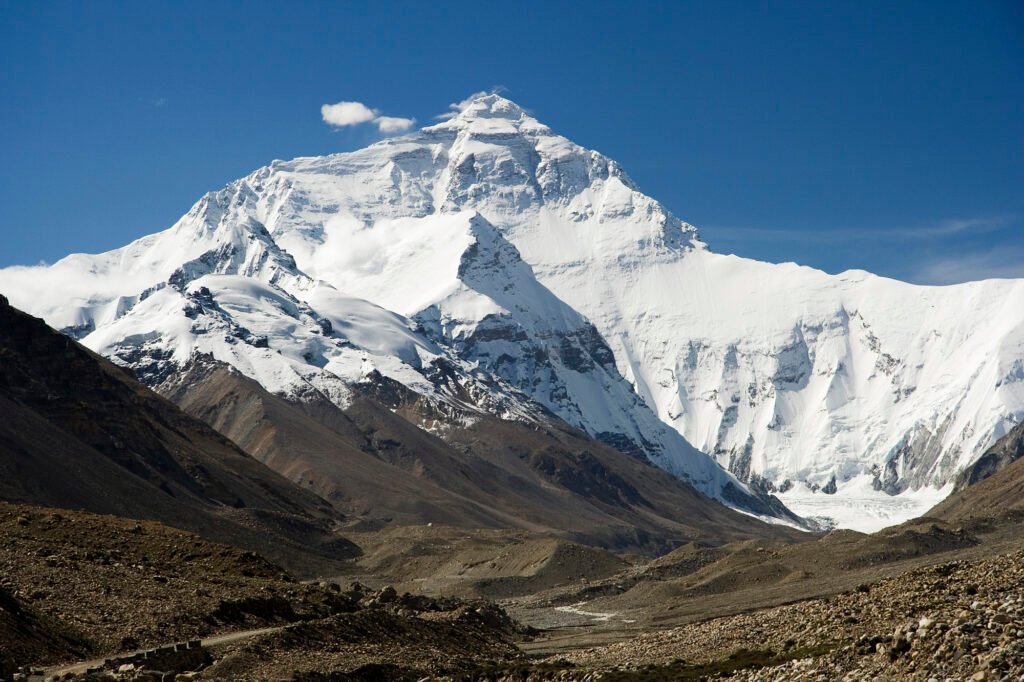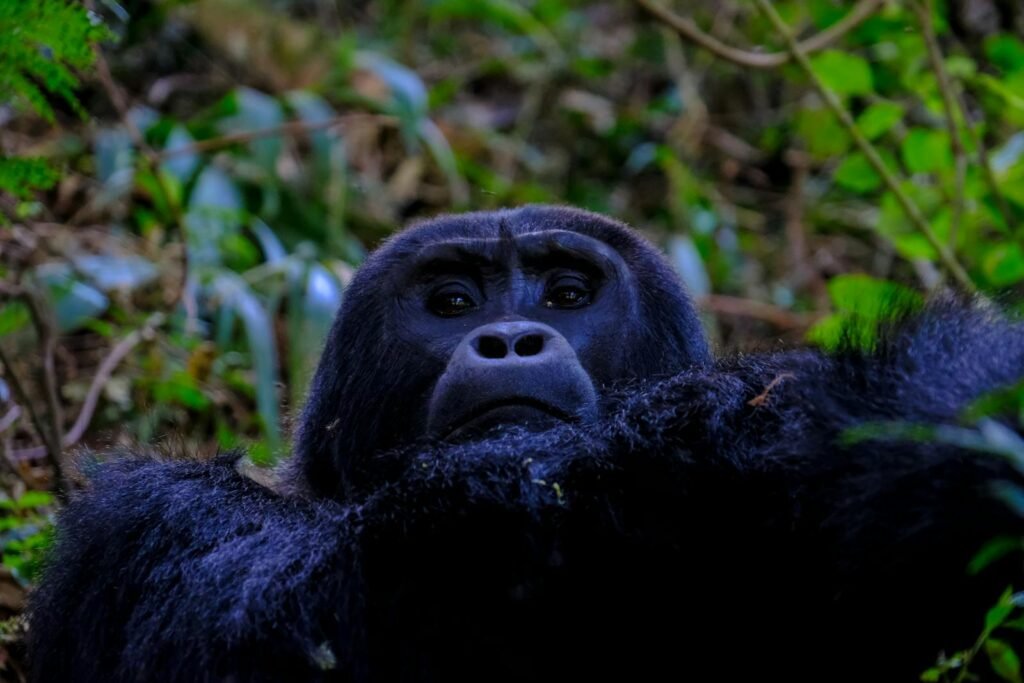The sun rises over the jagged spine of the Himalayas, casting an otherworldly glow upon Everest’s summit. Somewhere above 8,000 meters—where the air is thin, the wind bites, and death feels perilously close—climbers inch forward, each breath a battle. This is the fabled “death zone,” a place where survival is measured in heartbeats and every decision is tinged with risk. But what really happens inside a human body here? How do flesh and bone, heart and lung, mind and muscle respond to one of the harshest environments on Earth? Let’s pull back the curtain on a single day in this extreme world and reveal the astonishing ways our bodies fight to endure.
The Death Zone Defined: Where Survival Hangs by a Thread
Above 8,000 meters, atmospheric pressure drops so low that oxygen molecules scatter like frightened birds. It’s called the “death zone” for a reason—here, the human body cannot acclimatize for long. Every cell is starved for air, forcing climbers into a constant struggle just to stay alive. The margin for error is razor-thin. Even standing still, your body is working overtime. After just hours at this altitude, organs begin to shut down, and the risk of fatal mistakes multiplies. This is not just a geographical space; it’s a physiological gauntlet where only the most resilient survive.
Oxygen: The Missing Ingredient
Imagine trying to run a marathon while breathing through a straw. That’s what it feels like in the death zone. Oxygen levels are so low that the body can absorb only a third of what it gets at sea level. Muscles burn through fuel rapidly, leaving climbers weak and exhausted. Many use bottled oxygen, but it’s never enough to mimic normal conditions. Without supplemental oxygen, the body begins to cannibalize itself, breaking down muscle tissue to survive. Every breath is precious, and each inhale can feel like a small victory.
Breathing in Thin Air: The Body’s Desperate Response
In this extreme altitude, hyperventilation becomes an involuntary reflex. Your brain screams for more air, so you pant rapidly—even at rest. This quick, shallow breathing helps bring in more oxygen, but it also causes carbon dioxide levels in the blood to plummet. The result? Blood becomes more alkaline, which can lead to confusion and even unconsciousness. Some climbers describe the sensation as “breathing needles”—each inhale is sharp and unsatisfying, yet utterly necessary.
Heart Under Pressure: Racing Against Time

A climber’s heart works double-time in the death zone. To deliver what little oxygen is available, the heart rate skyrockets, often climbing above 140 beats per minute even while sitting still. Blood thickens to carry more oxygen, but this also increases the risk of clotting and stroke. Over time, the heart muscle itself can weaken. The stress is relentless, and the heart’s pounding becomes a constant, uncomfortable drumbeat in the chest. It’s no wonder so many climbers report feeling their own mortality with every heartbeat.
Brain Fog: The Silent Saboteur
Low oxygen turns the brain’s finely tuned circuits into a muddled haze. Decision-making becomes labored. Simple math feels impossible. Memory slips away, and hallucinations aren’t uncommon. This cognitive decline—known as hypoxic delirium—has led to countless tragic mistakes on Everest. Experienced climbers sometimes forget basic safety steps, like clipping into a rope. Psychologists call this “summit fever,” but it’s really the mind unraveling under pressure. The death zone doesn’t just attack the body; it erodes the very core of who you are.
Muscle Meltdown: Strength Sapped Away
The body’s muscles, desperate for energy, begin to cannibalize themselves. Protein breakdown accelerates, leading to rapid muscle wasting. Legs feel like lead, and hands lose dexterity. Even the simple act of gripping an ice axe can be exhausting. After just a day in the death zone, climbers can lose up to a pound of muscle mass. Recovery takes weeks, sometimes months—if it comes at all. The mountain leaves its mark long after the descent.
Frostbite: When Blood Fails the Extremities
As the body shifts blood flow to protect vital organs, fingers, toes, and noses are left to fend for themselves. The result is frostbite, a silent thief that can claim limbs within hours. Climbers often describe the pain as searing, then numbness sets in—a dangerous sign. In the death zone, even the best gloves and boots may not prevent tissue damage. For some, a successful summit comes at the cost of amputated digits or worse.
Dehydration: The Hidden Threat
It’s easy to forget how much water vanishes at high altitude. The dry, thin air steals moisture with every breath, and the body’s increased breathing rate accelerates fluid loss. Meanwhile, melting snow for water is laborious, and thirst often disappears. Dehydration sneaks up fast, thickening blood and taxing kidneys. Some climbers report splitting headaches and muscle cramps, not realizing their bodies are running dangerously dry. In the death zone, hydration can mean the difference between life and death.
Sleep: The Impossible Dream
Resting above 8,000 meters is a cruel paradox. The body craves sleep, but the environment makes it nearly impossible. Oxygen deprivation leads to fitful, shallow sleep, punctuated by frequent awakenings. Altitude-induced periodic breathing—where you stop breathing for seconds at a time—jolts climbers awake in panic. Some report vivid, disturbing dreams or even waking hallucinations. Without proper rest, both mental and physical performance plummet, turning simple tasks into herculean challenges.
Immune System Breakdown: Vulnerability Rises
The immune system takes a beating in the death zone. Stress hormones surge, suppressing the body’s natural defenses. Cuts and scrapes heal slowly, and respiratory infections spread easily among climbers sharing tents. Even minor illnesses can spiral out of control, as the body lacks the resources to fight back. This vulnerability adds another layer of danger, making every cough a potential crisis.
Digestive Struggles: Hunger Fades, Risks Grow
Digesting food at extreme altitude becomes a daunting task. Blood flow shifts away from the gut, and appetite vanishes. Nausea and vomiting are common, making it hard to refuel. As a result, climbers burn through fat stores and quickly become calorie deficient. Some lose all interest in eating, despite knowing they need energy to survive. The inability to digest food swiftly saps strength and can lead to dangerous weight loss in a matter of days.
Temperature Extremes: A Constant Battle
The temperature swings on Everest are merciless. In the sun, climbers can sweat under heavy down suits; minutes later, a cloud passes, and they’re shivering uncontrollably. The combination of wind chill and low oxygen means hypothermia is always lurking. Managing layers and heat loss becomes a minute-by-minute challenge, with any misstep potentially fatal. Climbers must constantly adjust, never truly comfortable, always alert to the threat of freezing.
Acclimatization: The Body’s Slow Adaptation
Before entering the death zone, climbers spend weeks acclimatizing lower on the mountain. The body responds by increasing red blood cell production, thickening the blood to carry more oxygen. Breathing becomes deeper and more efficient, and the heart learns to pump harder. But above a certain point, adaptation stalls. No matter how fit or prepared, the human body is simply not built for sustained life in the death zone. The clock is always ticking.
Genetic Gifts: Why Some Thrive Where Others Perish

Some individuals seem almost superhuman at altitude. Sherpas, for instance, possess genetic adaptations that allow them to use oxygen more efficiently. Their bodies produce more nitric oxide, which widens blood vessels and improves oxygen delivery. Scientists are still unraveling these genetic secrets, but it’s clear that not all climbers are created equal. For many, success in the death zone is as much a matter of biology as willpower.
Altitude Sickness: The Unpredictable Enemy
Acute mountain sickness (AMS) can strike without warning, regardless of experience or fitness. Early symptoms—headache, dizziness, nausea—can quickly escalate to life-threatening conditions like high-altitude cerebral edema (HACE) or pulmonary edema (HAPE). These complications cause the brain or lungs to fill with fluid, often with little time to react. The only treatment is rapid descent, but in the death zone, that’s easier said than done. Altitude sickness is the great equalizer, reminding climbers that nature always has the final say.
Psychological Toll: The Weight of Fear and Isolation
The mental strain of the death zone is profound. Isolation, fear, and the ever-present threat of death gnaw at even the most experienced climbers. The landscape is stark and silent, amplifying every worry. Some experience anxiety, depression, or overwhelming homesickness. Others are haunted by the sight of bodies left on the mountain—a chilling reminder of Everest’s cost. The psychological battle is as real as the physical one, demanding resilience and grit.
Teamwork and Trust: Survival’s Social Side
No one conquers Everest alone. In the death zone, the bonds between climbers can mean the difference between life and death. Trust is paramount, as each person relies on others for support, guidance, and sometimes rescue. The shared struggle for survival forges deep connections, but the pressure can also fracture teams. Decisions must be swift and coordinated—there’s no room for ego or hesitation when every second counts.
Equipment: The Last Line of Defense

Modern gear is a climber’s lifeline in the death zone. Down suits, oxygen tanks, and technical boots provide crucial protection, but they’re far from foolproof. Equipment failures—like a frozen regulator or broken crampon—can turn a routine climb into a desperate scramble for survival. Climbers must know their gear intimately and be prepared to improvise. Even with the best technology, the margin for safety remains distressingly thin.
Rescue and Recovery: The Challenge of Helping Others
Rescuing a stricken climber in the death zone is an ordeal of its own. The environment saps strength, and every extra kilogram can feel like a mountain on your back. Helicopters can’t fly this high, so rescues rely on human power and ingenuity. Sometimes, the harsh truth is that help simply isn’t possible. The decisions faced—who to save, when to turn back—are among the most difficult anyone will ever make.
Triumph and Tragedy: The Ultimate Test of Human Limits
For every triumphant summit, there are untold stories of loss and sacrifice. The death zone strips climbers down to their core, revealing strengths and vulnerabilities that rarely surface elsewhere. Success demands a blend of preparation, luck, and sheer stubbornness. Yet even the best can be brought low by forces beyond their control. The mountain is both stage and judge—demanding, unforgiving, and awe-inspiring.
The Everest Effect: Lessons from the Edge of Survival
Standing atop the world’s highest peak, climbers glimpse both the fragility and resilience of the human body. The death zone is a crucible, transforming those who enter. The lessons learned here—about limits, adaptation, teamwork, and respect for nature—echo long after the descent. Everest’s death zone is not just a place of peril, but a testament to what humans can endure when pushed to the brink.




